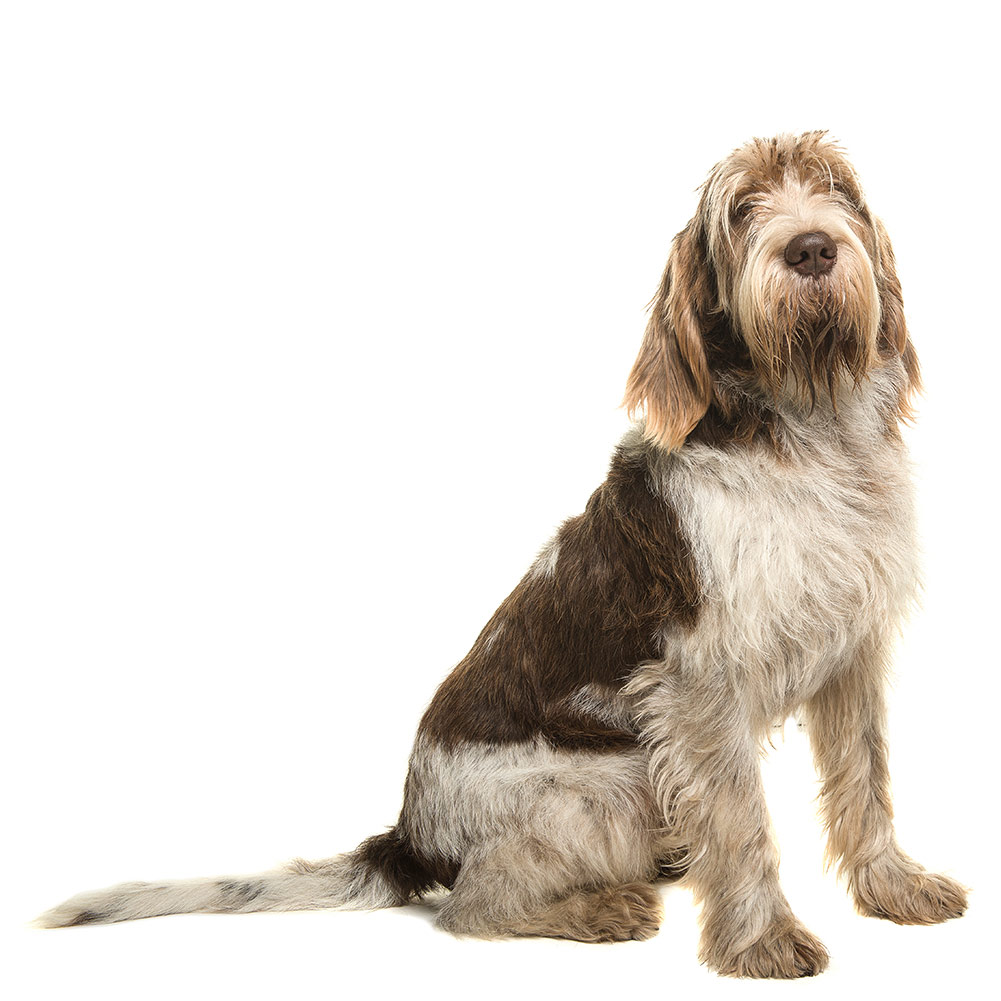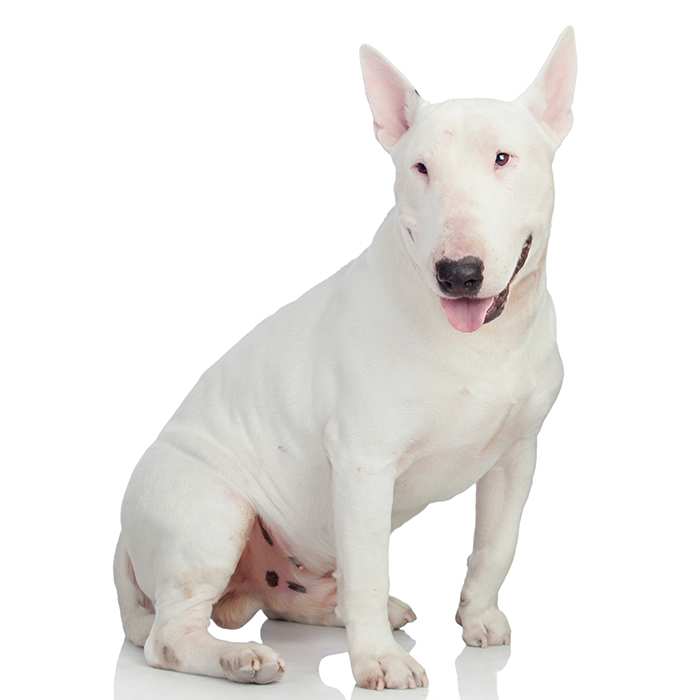Dobermann
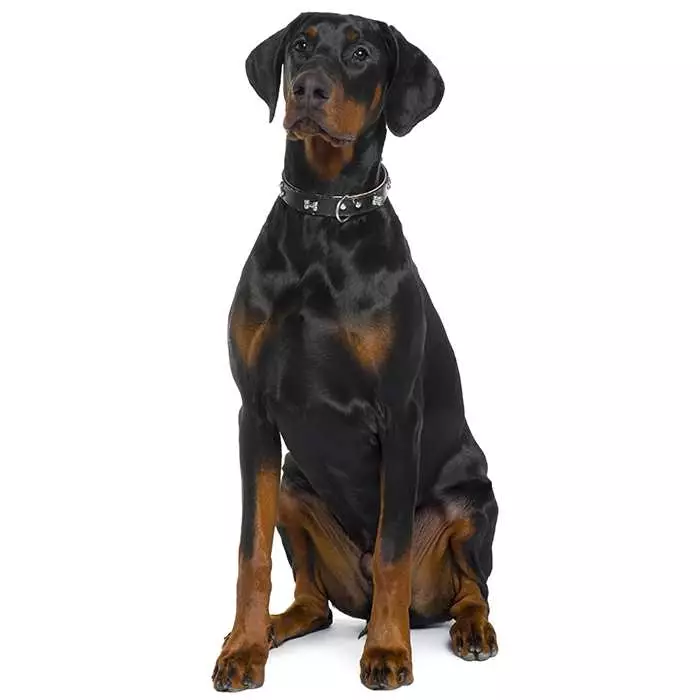

| Recommended for | Active, experienced owners & families with older children |
| Breed Classification | Working group |
| Other names | Doberman, Doberman Pinscher |
| Lifespan | 10 to 13 years |
| Size | Large |
| Temperament | Loyal, fearless, alert |
| Intelligence | Very high |
| Tendency to bark | Medium |
| Maintenance Level | Medium-High |
| Health Risk | This breed has a higher than average probability of developing health issues during its lifetime, hence the cost to insure is above average. |
Insuring a Dobermann?
Get our award-winning Nose-to-Tail Cover with up to $30k annual benefit limit, up to 90% of eligible vet bills back, and no sub-limits.
Get a quick quote
Is this breed right for you?
Try our breed selector quiz to find out your best matching breed!
Insuring a Dobermann?
Get our award-winning Nose-to-Tail Cover with up to $30k annual benefit limit, up to 90% of eligible vet bills back, and no sub-limits.
Get a quick quote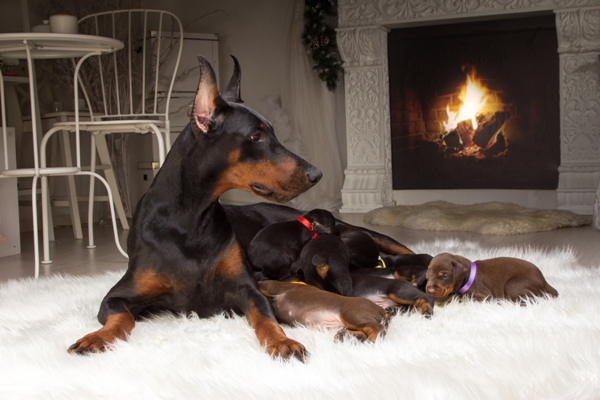
Breed history of Dobermanns
The Doberman originated in the German state of Thuringia and was first bred by Karl Friedrich Louis Dobermann. Working as a tax collector, Dobermann was often threatened and as a result decided to breed a dog which could protect him during his work. The result was a larger, less refined dog than today’s Dobermann (or Doberman), named the Doberman Pinscher in honour of its creator. The modern Dobermann was later developed by Otto Goeller and Philip Greunig.
It is believed that the Doberman is a mix of several different dog breeds, including the German Pinscher, the Beauceron, the Rottweiler, the Thuringian Sylvan Dog, the Greyhound, the Great Dane, the Weimaraner, the German Shorthaired Pointer, the Black and Tan Terrier (forerunner of the Manchester Terrier or English Terrier as it is known in Australia), the Old German Shepherd Dog and the Thuringian Shepherd Dog. It is uncertain, however, to what extend each breed was used to create the dog we see today.
The “Tax Collector’s Dog” quickly gained an international reputation as a masterful working dog. Dobermans have excelled as guard dogs and police dogs, at military K-9 duty, as therapy dogs and service dogs for the disabled, as search-and-rescuers, and in competitive dog sports. During World War II, the U.S. Marine Corps adopted the Doberman as its official War Dog. Sadly, twenty-five of them died during the battle for Guam.
Despite their loyal and brave service, after the war the breed nearly became extinct. Werner Jung, who searched all over Germany for the right dogs, is credited with single-handedly saving the breed.
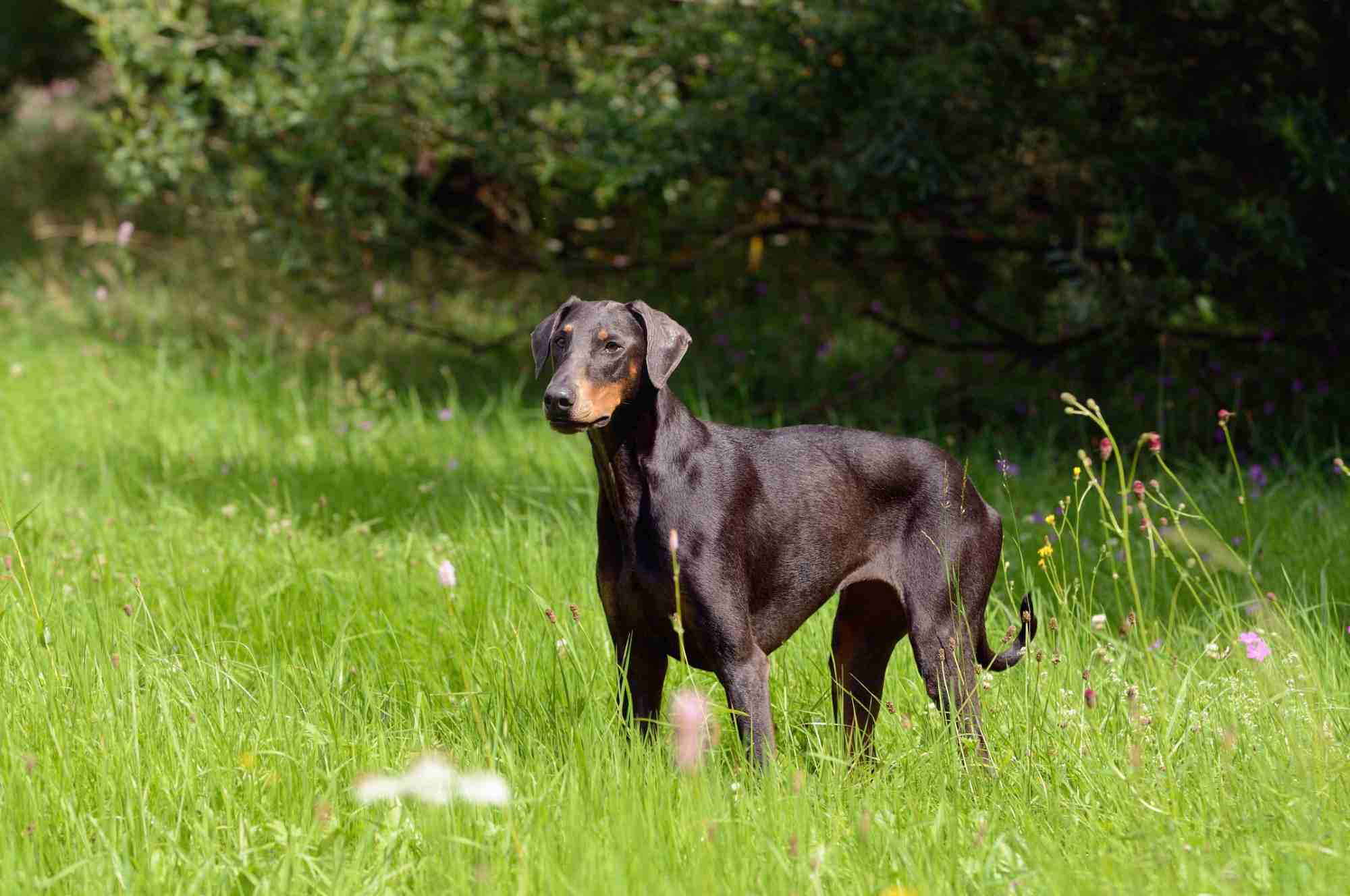
Physical description of Dobermanns
Dobermanns have a strong, square and muscular build and a lean stature that is physically impressive and reflects their athleticism, endurance and agility.
They have very short coats that come in four main colours, black, red, blue and fawn, and they can be one colour all over or mixed.
Dobermanns are born with long, hound-like tails and naturally flat, floppy ears. Tail docking and/or ear cropping are commonly performed on this breed, resulting in a stumpy tail and erect, pointy ears, leading many people to believe the latter is their natural appearance.
| Weight range | Male 34 to 45 kg, female 27 to 41 kg |
| Height range | Male 66 to 71 cm, female 61 to 66 cm |
| Colours | Black, red, blue and fawn; solid or with rust markings |
| Coat length | Short |

Dobermann personality and temperament
Dobermanns are sensible, confident and smart dogs. Faithful and very attached to their owners, they thrive on human interaction and are eager to learn and to please. Playful and fun-loving, they will keep their puppy-like personality until around the age of 3 or 4.
Although they are often portrayed as aggressive dogs due to their history as working dogs, modern Dobermans have a much more even and friendly temperament, and they are usually very sociable with humans and other dogs. North American Dobermans tend to be calmer and more even-tempered than those from Europe.
Dobermanns thrive on firm, consistent leadership from all members of the family. Fiercely loyal, the Dobermann is a great guard dog that does not need any guard training – it is instinctively protective of its masters.
Mental stimulation is very important for the Doberman. They can make excellent therapy dogs and are great with nursing home residents, as they are very patient and are happy to go at the resident’s own speed.
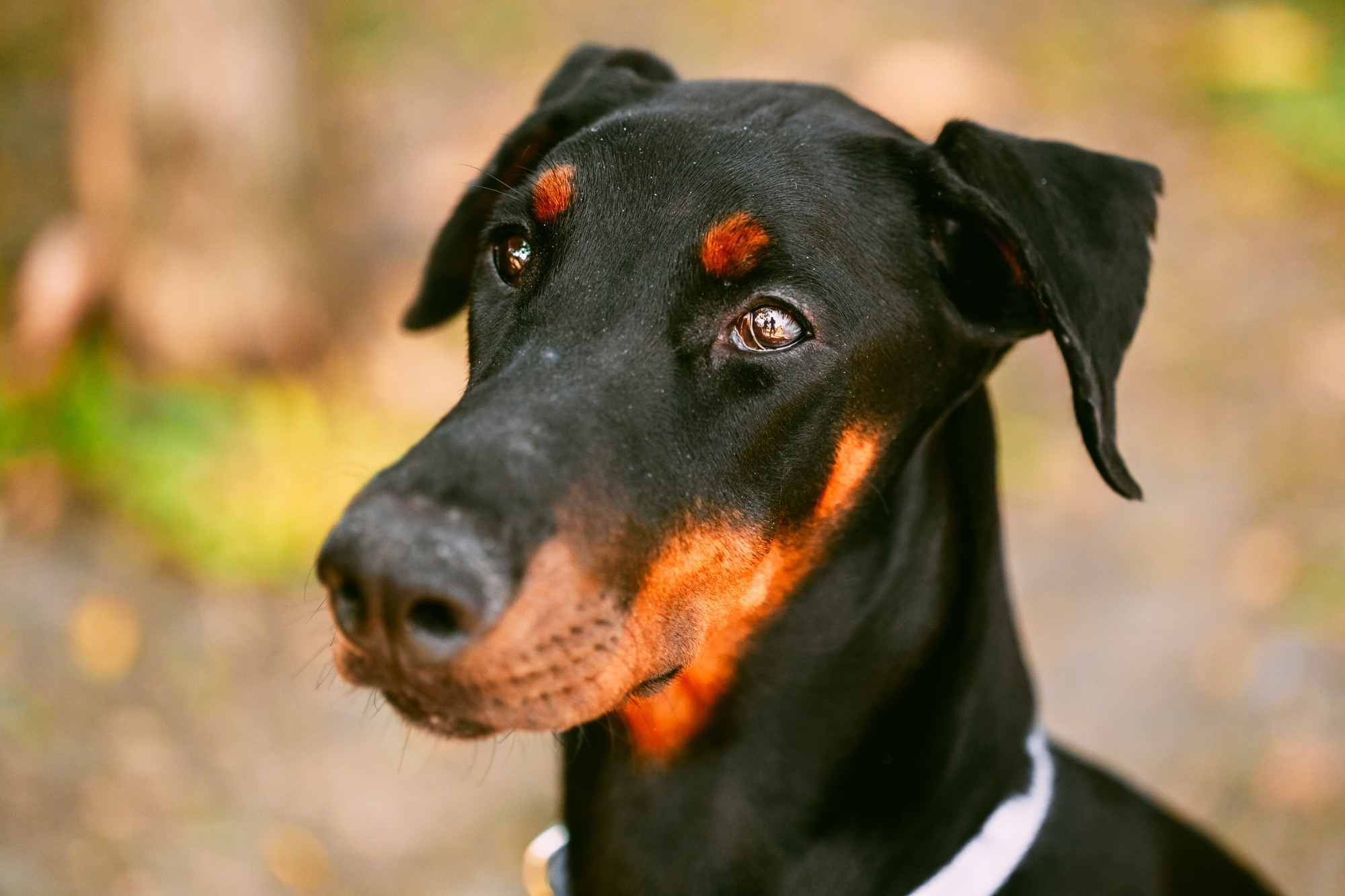
Dobermanns with kids and other pets
Generally speaking, small children and adult dogs may not mix well with the Dobermann.
However, many Dobermanns are sensitive and gentle and can be great with kids and other animals if they have been socialised with them from a very early age.
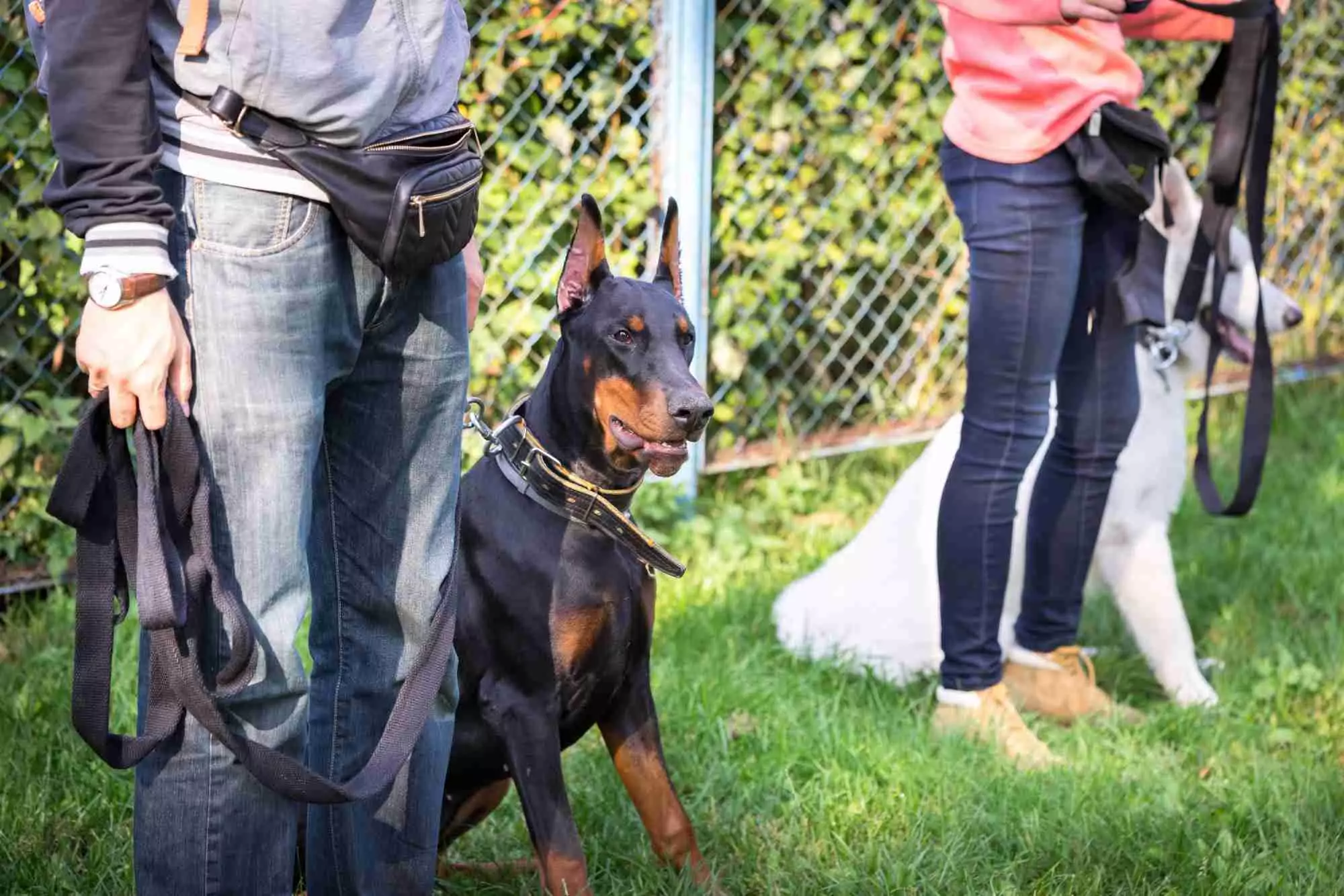
Dobermann training and exercise
Dobermanns are very energetic and need a lot of exercise and free play. A long walk, hike or jog every day and having a large fenced area where they can run is vital for their physical and mental well-being.
Keeping their minds active is important. Dobermans are very intelligent, learn easily and respond quickly, so teaching them a new trick or command is not difficult. Participation in canine sports such as obedience, tracking, and agility will provide the mental stimulation and physical exercise that is so important for this breed and strengthen the bond between dog and owner.
Early socialisation from puppyhood is essential for Dobermans, as is obedience training. Puppy training classes are highly recommended as well. With a reputation as being aggressive, it is every Dobermann owner’s responsibility to ensure that their dog is raised to be a happy, well-behaved companion.
Dobermanns require firm and consistent leadership from all members of the family. They are very strong dogs and can become pushy, destructive, and unmanageable if not raised properly.
Their of loyalty and protective instinct makes them excellent guard dogs, if the owner wants to focus on developing this trait.
| Energy level | Very high |
| Exercise requirements | Very high |
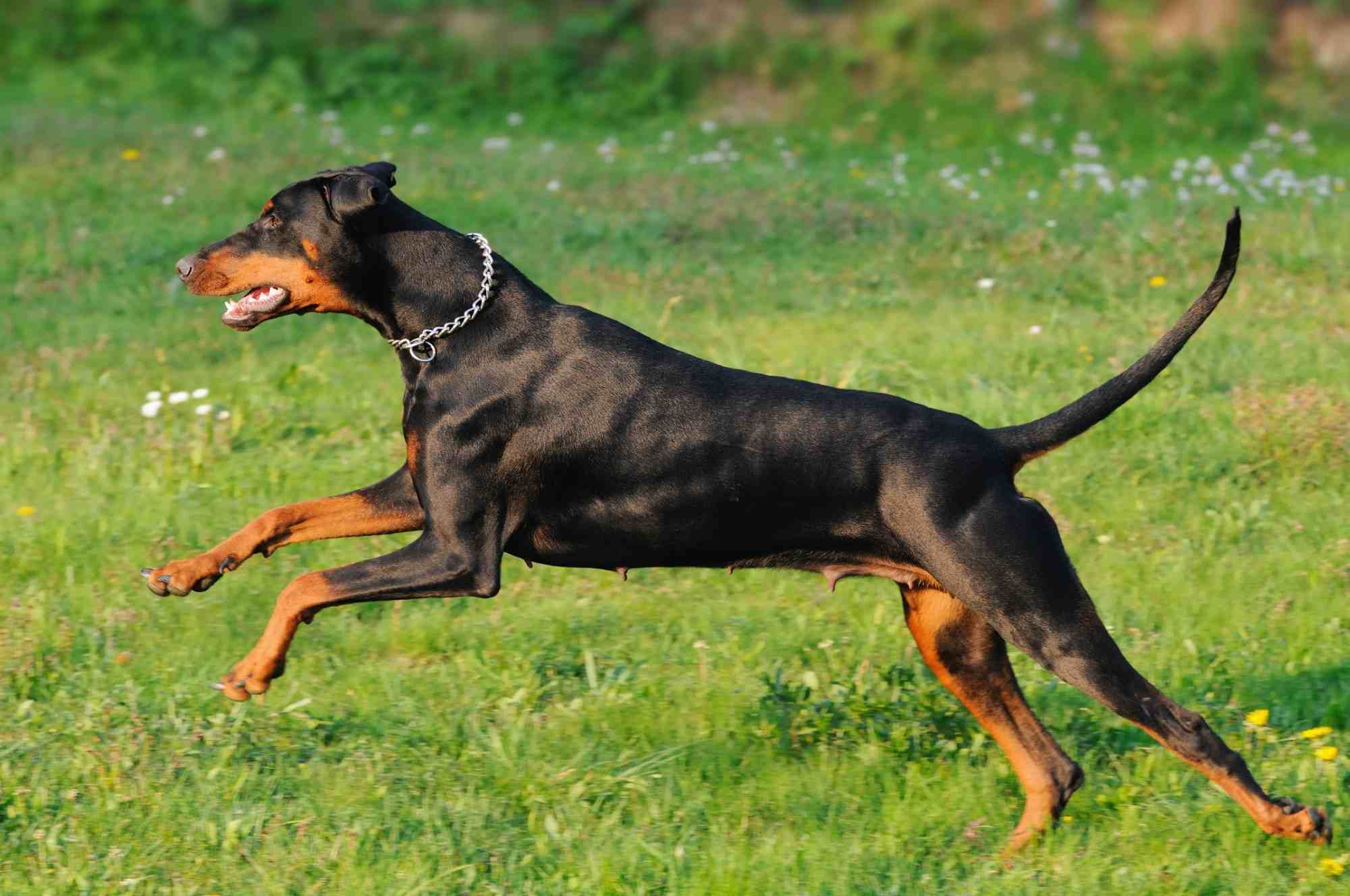
Dobermann feeding and nutrition
To effectively meet their energy requirements, Dobermanns should be fed an excellent-quality dog food throughout their lifetime.
During puppyhood, they should be fed an age-appropriate diet approved by the dog’s breeder or veterinarian.
Check with your vet if you have any concerns about your Dobemann’s weight or diet.
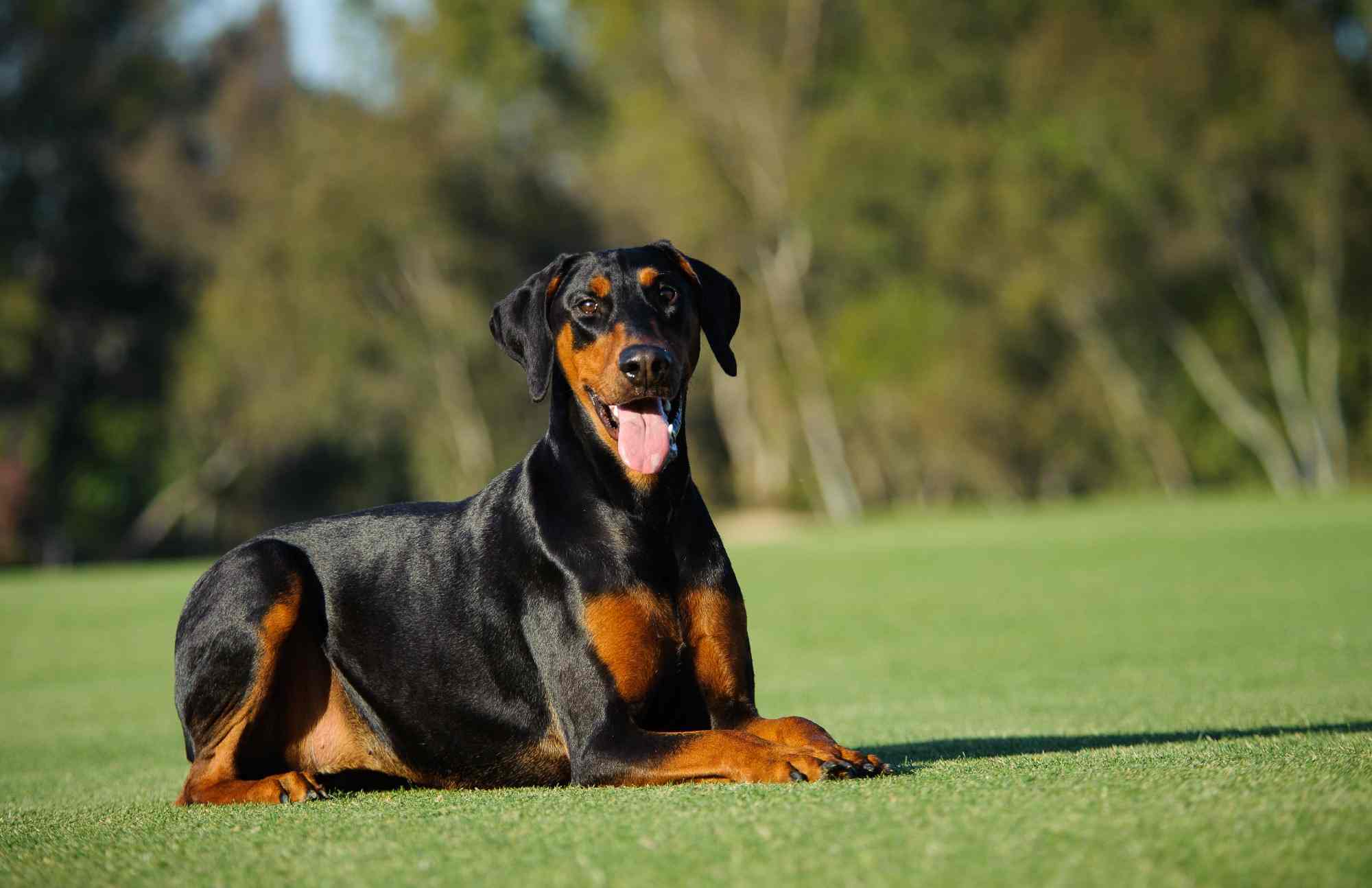
Dobermann care and grooming
As they have very short hair, Dobermanns require very little grooming and shed an average amount.
A quick daily going-over with a short-bristled brush or a grooming mitt will keep their coats shiny and healthy.
They do not need to be bathed often.
Health issues for Dobermanns
- Von Willebrand’s disease, a condition which impedes the blood’s ability to clot, can lead to excessive bleeding post-surgery, nosebleeds, bleeding gums or blood in the stomach. It is currently incurable, and blood transfusions are the only treatments available. Most dogs suffering this disease can lead normal lives, and there are tests available to determine if your pet has it.
- Hip dysplasia is a heritable condition in which the thighbone and hip joint don’t fit together properly. This can cause pain and lameness in the leg and arthritis later in life, but in some dogs it is not outwardly obvious. X-rays can be conducted to test for the condition.
- Progressive retinal atrophy is possible in Dobermans, in which the retina gradually deteriorates causing night-blindness early in the disease and gradual day-blindness as well. Many dogs are able to adapt to the loss of vision if their environment remains unchanged.
- Hypothyroidism is a thyroid gland disorder which can lead to other conditions such as epilepsy, hair loss, obesity, lethargy and skin conditions. It is treatable with proper diet and medication
- Wobbler’s Syndrome is thought to be an inherited condition in Dobermans, and causes spinal cord compression and instability due to a poorly formed spinal canal. Other symptoms include neck pain and leg paralysis. Surgery is an option, however it does not rule out future problems.

- Cardiomyopathy affects the heart, making it become weak and thin. It will eventually lead to heart failure since pumping blood around the body becomes too difficult. The condition is treatable with oxygen, fluid therapy and medication
- Albinism is a genetic condition in which the dog is white with pink skin and nose and light eyes. Affected dogs are sensitive to sunlight and can develop other conditions such as cancer and eye problems.
- Colour mutant alopecia mostly affects blue or fawn-coloured Dobermans. Affected dogs are born with normal coats but between 4 months and 3 years old develop brittle hair and suffer patchy hair loss, which only affects the blue patches of the coat. There is no cure, but medicated shampoos are available which may prevent itching and scaling.
- Other issues, including narcolepsy and gastric dilation-volvulus can also affect the Doberman.
Not all conditions are covered by Pet Insurance. For details of Bow Wow Meow Pet Insurance cover, refer to the Product Disclosure Statement.
What do Dobermann owners claim for the most?
- Mass Lesion
- Wound
- Gait Abnormality
- Cardiomyopathy
- Dermatitis
Thinking about insuring a Dobermann
Thinking about insuring a Dobermann
Learn moreThinking about insuring a Dobermann
Learn moreFree engraved pet ID tag on sign up3
Customer Satisfaction
21 day cooling off
Easy to use Pet Portal

GapOnly® in vet claims
MORE INFORMATION
Dobermann Club of New South Wales Inc: http://www.dobermannnsw.com.au/
Doberman Club of VIC Inc: http://www.dobermannclubvictoria.com.au/
Dobermann Rescue Australia Wide (DRAW): https://dobermannrescueaustraliawide.com/


